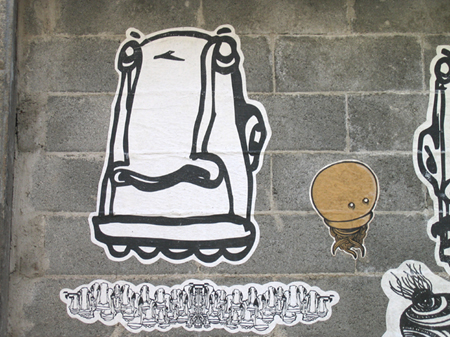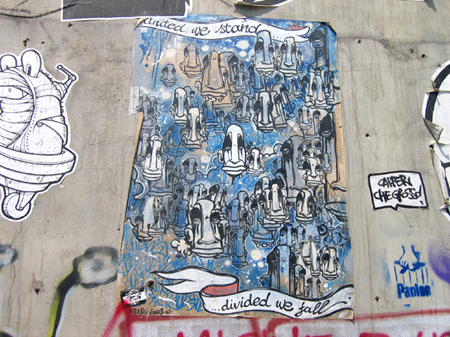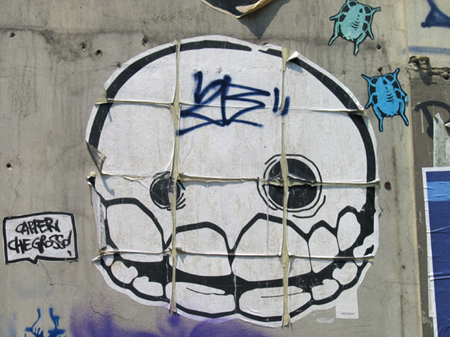BO130 & MICROBO
PEOPLEText: Roberto Bagatti
“Being a graffiti writer is about taking the chances and shit, taking the risks, taking like all the arguments from the police, from your own mom, you know from your friends and shit. You know, you’ve got to take all that bullshit ‘aahh, you’re vandalizing all those trains’. (…) How can you call people that hang out windows and watch trains writers, man? You’ve gotta write, you’ve gotta do the action, you’ve gotta go out there and wreck up, you’ve gotta go out and paint and be called an outlaw at the same time.” – Lee Quinones in Charlie Ahearn’s ‘Wild Style‘

Hip Hop hasn’t ever had an easy time in Italy. One could point out that it’s presence has spreaded more through branded street styled wear, that has become popular in these last years, than US rap, that hardly ever makes it to the mainstream because of the language barrier. There’s been an Italian rap scene for quite a while but it’s rarely reached the hights of the US imports (except some classic underground joints from Isola Posse All Star or Onda Rossa Posse, to mention a couple). In all this, graffiti happens to be the most popular and practised of the disciplines within the italian Hip-Hop scene, and it has spreaded across the country. And in some cases beyond Hip-Hop.
As in many other cities, if you cross the streets of Milan, from the suburbs to the center, you’ll notice the difference: from the decadence of the outskirts to the more elegant and trendy central streets, filled with fashion showrooms and high street megastores. Along this trip, one thing that you’ll probably notice is that Milan is home to one of largest graffiti comunities you’ve probably ever seen; and you’ll have that impression because the whole city has been bombed by writers. Tags, aerosol pieces, stencils, stickers and posters are literally everywhere. The city’s streets have been claimed and now seem to belong to this community, a bridge hardly get’s built and it’s already tagged before the final touches. You could almost cross the city following certain tags: I live in the southern part of Milan and the same writers tag my area and other distant districts across the city. Graffiti runs along the city’s veins, from the heart to the terminations.
The amount of styles and references are mindbending to say the least, with different generations working in the same moment, from the old school writers to the younger generations, many of whom seem to be moving towards posters and stickers.
An amazing aspect of the graffiti scene in Milan is that you can easily step into the works of many foreign writers, that live outside Italy, next to the local talents. Most of all you can see and witness the way these artists work and collaborate, the way many things have changed from the oldschool.

As Bo130 points out, today the idea of becoming the king is somehow changing to a more open attitude towards fellow writers. And it’s not about having your name everywhere, bombing the whole city but more a matter of having your area, your exhibition turf (street gallery is a definition I would avoid using, as every other definition that involves the use of the word ‘street’), where you can work and collaborate, invite other writers, and ultimetly organize. That is another point: these writers have claimed the streets and now are also using them in creative terms, not simply bombing them with tags.

Microbo also points out some examples of positive and negative interaction with pedestrians, to underline the fact that graffiti is an expression also made by it’s context. And that streets are spaces where people live their lives, where everyone goes, without distinctions.
Read more ...




